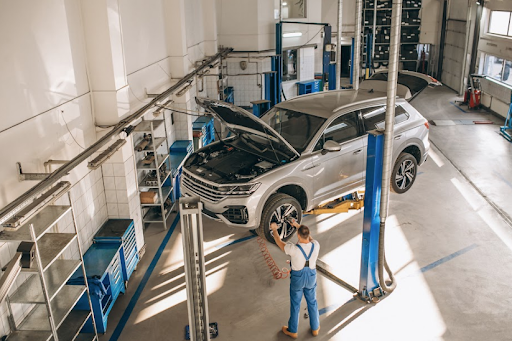How to Grind & Seal Concrete Floors: What You Need to Know

The grind and seal process involves preparing the concrete surface so it is ready to use and be walked on. This process involves repairing cracks and other damage, as well as grinding the surface of the concrete down until it’s completely smooth. Once smooth, a sealer is poured on top to protect it. This process is incredibly important. Here are answers to a few of the most commonly asked questions we receive about grinding and sealing concrete.
Why is the Grind and Seal Process So Important?
When it comes to the grind and seal process, many people ask why it’s so important. Safety and longevity are two of the main reasons. Concrete is a naturally porous material, so it can easily be damaged by routine wear and tear if it’s not properly sealed or protected. Furthermore, a smooth surface can help prevent injuries such as slips and falls.
What Does the Process Entail?
The first step is to grind the surface of the concrete. This removes debris and other contaminants from the surface. Once these are removed, the technicians will apply cement patch repair to any cracks or holes in the concrete. After this, the concrete is then ground again to smooth out any of the remaining imperfections. After this, the surface is cleaned and a sealant is applied.
If you want to apply color to your newly smooth concrete floor, you’ll have to do so immediately after the surface is ground for a second time. This has to be applied before the topcoat; otherwise, it won’t be effective.
Does Grind and Seal Work in High-Traffic Areas?
Concrete floors that are ground and sealed aren’t necessarily recommended for areas that experience heavy foot traffic, as you will usually need to repeat the process annually. Of course, you can opt for grind & seal in a high-foot traffic area, but just keep in mind that you may have to shut down the office or workspace for a couple of days in order to re-seal it when necessary.
Which Industries Are Recommended for Grind and Seal Concrete?
Grind & seal concrete is usually recommended for industries that deal with animal waste, such as shelters and veterinary offices. This is also recommended for any industry that routinely deals with oil and grease, such as an auto repair shop.
Pharmaceutical laboratories and other industries that work with chemicals may prefer grind and seal concrete since it can be customized to include a chemically-resistant polyurethane sealant.
What’s Better: Grind and Seal or Polished Concrete?
On the surface, grind and seal and polished concrete don’t appear to have too many differences. However, they do involve different processes and have some distinct advantages over one another.
For example, concrete polishing typically costs more money than grind & seal application. This is mainly because it requires more laborers to install and takes more tools and resources. On average, the concrete polishing process takes about two to three days. While the grind and seal process takes the same length of time on average, it doesn’t cost as much money. Furthermore, business owners may prefer to use grind and seal concrete since it’s easier to match throughout the entire workspace. Grind and seal concrete offers a more consistent appearance throughout all the rooms being worked on. Unlike polished concrete, which relies on the concrete itself, grind and seal concrete relies on the sealant to offer that glossy finish. This allows you to get the same look across the entire building, which will help keep things consistent for both safety and appearances.
Another big difference between grind and seal and polished concrete is how durable the final product is. While both are durable, polished concrete is better for areas that have heavy foot traffic. It also requires less maintenance than grinding and sealing concrete. Furthermore, if your concrete floor was previously stained, the grind and seal process can help hide them in most cases.
Types of Gloss Finishes
As noted above, ground and sealed concrete will have a glossy appearance. You can customize your floor with either a satin, matte, or gloss finish. This final look is the result of a topical sealant that’s applied to the concrete’s surface.

